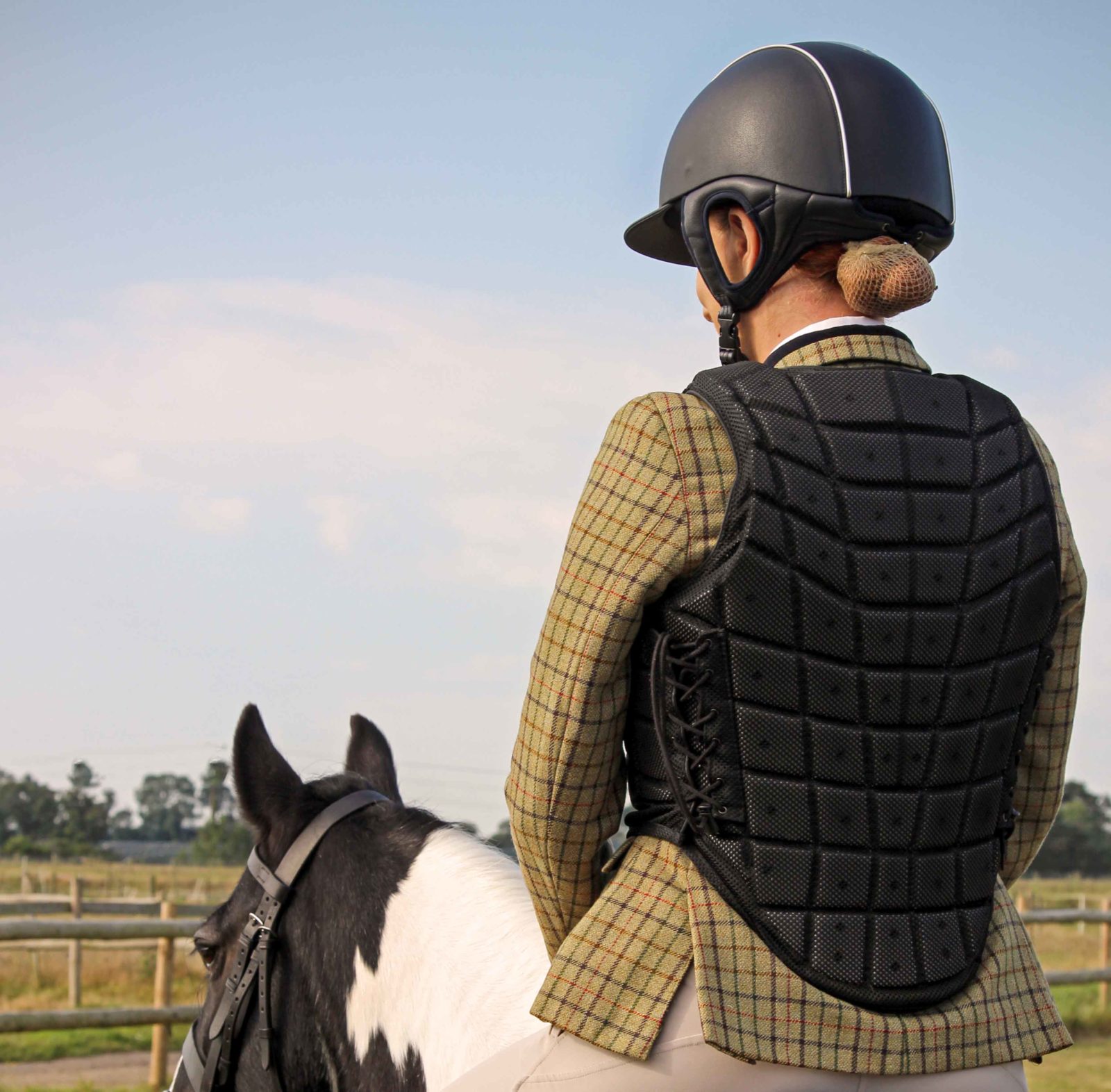It feels like just moments ago that we were enjoying the summer competition season and just like that we’re preparing for wintery weather and counting down to Christmas. Of course, the looming festive season means the new year will be here before we know it – and that has implications for anyone who competes in a body protector. In January 2024, the rules for body protectors will be changing. All body protectors with BETA 2009 tags will no longer be legal in British Eventing, Pony Club and British Riding Club events. In this blog, we’re showing you which tags you need to look out for, and which body protectors are still fine to use. Plus, we’ll be taking a closer look at our Titanium Ti22 unisex body protector – which will be totally legal to wear for competitions in 2024!
Which body protectors won’t be legal in 2024?
If you’re not sure if your body protector will be legal, check to see what year is printed on the BETA tag on it. The 2009 tags (as well as saying 2009 on them) are purple for a level three, gold for a level two and black for a number one level body protector.
Which body protectors are still legal for competitions?
Luckily if you find a tag printed 2018 when you check your body protector, you’re fine to still use it in British Eventing, British Riding Club and Pony Club competitions and events in 2024. There are three colours of tags to look out for and they dictate which disciplines you can use the body protector in. For the 2018 BETA tags, blue indicates a level three body protector, orange a level two and green a level one body protector. So, what do those different levels mean?
Level one body protectors provide the lowest level of protection and are only considered appropriate for licensed jockeys. That’s because they are designed to be incredibly lightweight to help professional jockeys ride at lower weights. Level two body protectors are considered suitable for general riding in low risk situations and for professionals such as licensed jockeys when specified by their racing authority or regulatory body. Finally, the level three body protectors are the right choice for working with horses, competing, including eventing and jumping, and general riding. That’s because they are designed to prevent minor bruising, reduce soft tissue injuries and even prevent a limited number of rib fractures.

Can I hack, school and train in my old body protector?
It’s worth adding that there’s nothing stopping you continuing to use your older body protector for hacking, schooling and training at home, but there are a few things to be aware of. Firstly, accidents can occur anywhere, not just when you’re competing, so it’s wise to wear the highest quality safety equipment you can whenever you’re in the saddle. And secondly, the foam in a body protector can compress and degrade over time. Just like we advise people to replace their riding helmet to ensure it will still protect your head when needed, we advise people to replace older body protectors. That way you know the foam will still be in tip top shape to help protect your body.
A closer look at our Ti22 body protector
If you’re going to be shopping for a new body protector ready for the rule changes next January, why not check out our Ti22 body protector? This is a unisex body protector that’s designed to be lightweight, comfortable and allow you to move with ease thanks to the revolutionary SegTek construction and channelled airflow hole heat release system. It’s available in three different size ranges – infant, child and adult’s sizes – and short, regular and tall back lengths. This wide range of sizes combined with the lace-up sides mean that riders of all ages and sizes can find the perfect fit. Take a closer look at the Ti22 body protector here.


